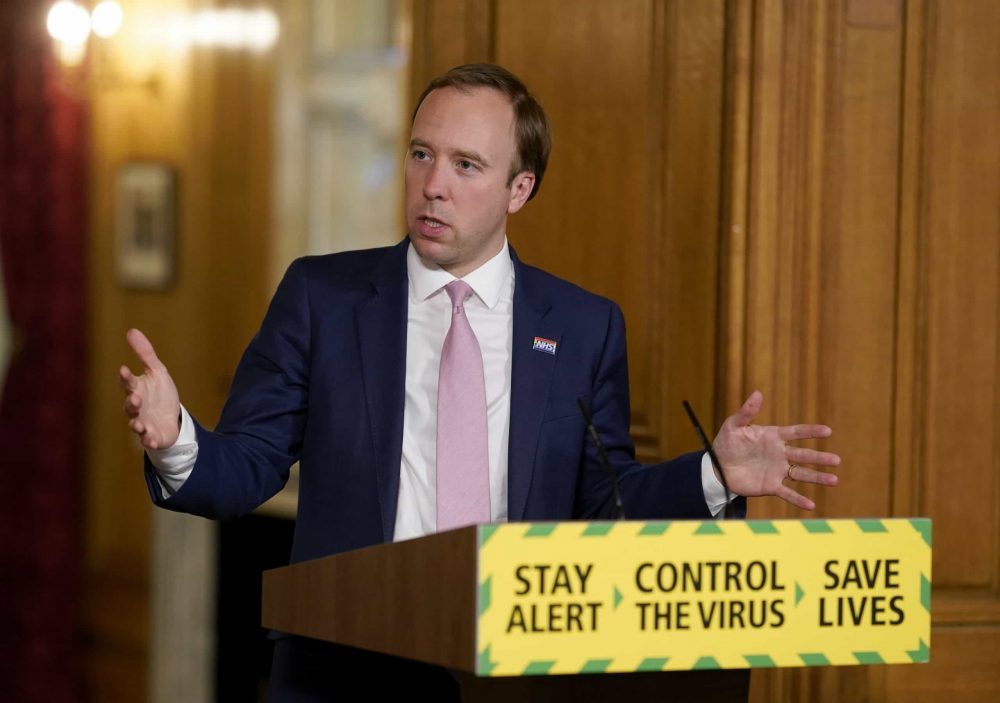
Credit;PA
Matt Hancock has insisted the Government made the “right decisions at the right time” with the coronavirus lockdown, despite a leading scientist saying lives would have been saved had ministers acted sooner.
The Health Secretary disagreed with the comments by infectious diseases expert Professor John Edmunds, who suggested the UK should have imposed restrictions in early March – although he admitted it would have been “very hard to pull the trigger at that point”.
Prof Edmunds, who attends meetings of the Government’s Scientific Advisory Group for Emergencies (Sage), told BBC One’s The Andrew Marr Show: “We should have gone into lockdown earlier.
“I think it would have been hard to do it, I think the data that we were dealing with in the early part of March and our kind of situational awareness was really quite poor.
“And so I think it would have been very hard to pull the trigger at that point but I wish we had – I wish we had gone into lockdown earlier. I think that has cost a lot of lives unfortunately.”
Asked if he agreed with the professor’s comments, Mr Hancock later replied: “No. I think we took the right decisions at the right time.
“And there’s a broad range on Sage of scientific opinion, and we were guided by the science – which means guided by the balance of that opinion – as expressed to ministers through the chief medical officer and the chief scientific adviser.
“That’s the right way for it to have been done.”
Prof Edmunds, who said the Covid-19 epidemic “is definitely not all over”, has previously spoken of herd immunity as a way to end the spread of the virus, but told Andrew Marr this could be done via vaccination.
“What I said about herd immunity was that that’s how the epidemic eventually will end – and it will end via herd immunity.
“Via vaccination is how we want it to be achieved but that’s how all epidemics come to an end, and so we will be under these restrictions in some way until levels of immunity are such in the population that we don’t have to take extra precautions to stop chains of transmission.”
In other developments, the Prime Minister is expected to use a speech in the coming weeks to set out plans to “rebuild Britain” – and effectively relaunch the Tories’ domestic agenda – in the wake of the pandemic.
The Conservatives’ poll rating has plummeted during the crisis, with a survey by Opinium placing the Tory vote share on 43 per cent, with Labour on 40 per cent.
Mr Johnson will this week chair a meeting of his Cabinet to update them on the next lockdown-easing steps for a number of sectors, which are expected to take effect from June 15.
The Sunday Times reported that the PM will unveil plans to ease restrictions on weddings and funerals from next month, as well as possible measures to reopen hairdressers before July 4.
And the paper said Mr Johnson has told Transport Secretary Grant Shapps to secure “travel corridor” deals with holiday hotspots by June 28.
Downing Street announced on Saturday night that churches and other places of worship are set to open for private prayer from June 15, but worship groups, weddings and other services will still not be permitted.
The PM is said to have signed off on plans to reopen the economy after being warned by Business Secretary Alok Sharma that a failure to reopen the hospitality sector could cost 3.5 million jobs. Mr Johnson reportedly replied: “Christ!”
However, there are concerns that the reproduction rate of coronavirus is dangerously high – with a report by Public Health England and Cambridge University placing the R value just above 1 in the North West.
If R is 1 or higher, the virus will spread exponentially through the population, while a value less than 1 indicates the virus is in decline.
Meanwhile more anti-racism demonstrations are due to take place in London and across the country on Sunday.
Mr Hancock said it was “undoubtedly a risk” that the protests would lead to more coronavirus cases, and urged people not to gather in groups of more than six people.
He also dismissed as “not true” comments by the UK statistics authority that testing figures are designed to show the largest possible number of tests.
The body’s chairman Sir David Norgrove said last week: “The aim seems to be to show the largest possible number of tests, even at the expense of understanding.”
Asked about the comment, Mr Hancock told Andrew Marr: “The thing about it is that it is not true. There are other ways that you could measure testing to give much higher figures and we chose not to.
“What we chose, advised by my permanent secretary, are the most accurate ways to show the testing that the Government is doing, which is the number of tests either directly administered or sent out.”
Related: Care home residents hit with ‘coronavirus bill’ as providers struggle